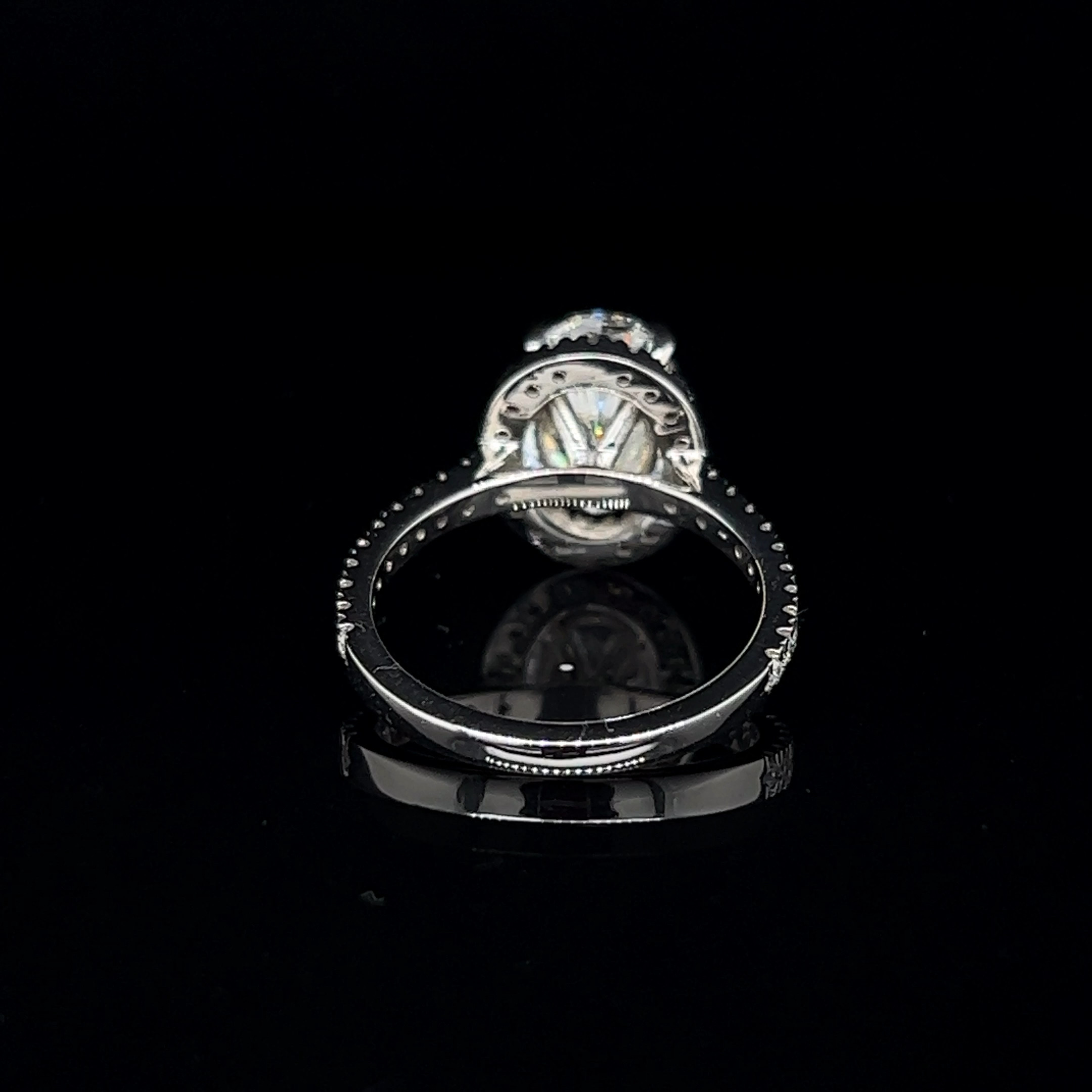Choosing the perfect engagement ring is about more than just selecting a beautiful diamond. The setting—the metal framework that holds the gemstone—plays a huge role in the ring’s overall appearance, durability, and how the diamond sparkles. For women, the setting can express personal style, enhance the diamond’s brilliance, and ensure the ring fits seamlessly into everyday life.
If you’re shopping for diamond engagement rings, understanding different settings is key to making the best choice. In this guide, we’ll explore the most popular and timeless settings for women, their pros and cons, and how to choose the one that fits your lifestyle and personality.
Why the Setting Matters in Diamond Engagement Rings
The setting does more than just hold the diamond in place. It influences:
-
Security: How firmly the diamond is held.
-
Light Performance: How much light enters and reflects from the diamond.
-
Style: From vintage elegance to sleek modernity.
-
Comfort: Whether it’s easy to wear every day without snagging.
The right setting can make a modest diamond look larger or turn a statement stone into the centerpiece of a timeless masterpiece. When shopping for diamond engagement rings, never underestimate the impact of the setting.
1. Prong Setting – The Classic Favorite
The prong setting is one of the most iconic choices for diamond engagement rings. It uses small metal claws (usually four or six) to hold the diamond securely in place.
Pros:
-
Maximizes light entry, enhancing sparkle.
-
Timeless and versatile.
-
Easy to clean and maintain.
Cons:
-
Prongs can snag on clothing if not maintained.
-
May require periodic tightening.
Best For: Women who love classic, elegant styles and want their diamond to shine as brightly as possible.
2. Bezel Setting – Modern and Secure
In a bezel setting, a thin rim of metal encircles the diamond, holding it securely in place. This setting is gaining popularity in diamond engagement rings for its sleek and contemporary look.
Pros:
-
Extremely secure—perfect for active lifestyles.
-
Protects the diamond from chips and scratches.
-
Smooth edges prevent snagging.
Cons:
-
Slightly reduces light entry, which may lessen brilliance.
Best For: Women who prefer minimalist designs or need a durable ring for everyday wear.
3. Halo Setting – All About Extra Sparkle
The halo setting surrounds the center diamond with a circle of smaller diamonds. This style has surged in popularity in recent years and is a favorite for glamorous diamond engagement rings.
Pros:
-
Makes the center diamond appear larger.
-
Adds dazzling sparkle from every angle.
-
Works well with various diamond shapes.
Cons:
-
Can be harder to clean due to multiple small stones.
-
Requires careful maintenance to prevent stones from loosening.
Best For: Women who love a bold, dazzling look with lots of shine.
4. Pavé Setting – Sparkle Across the Band
In pavé settings, the band is encrusted with tiny diamonds set closely together, creating a glittering surface. This design is often combined with other settings in diamond engagement rings for added brilliance.
Pros:
-
Adds sparkle to the band as well as the center stone.
-
Creates a luxurious, high-end look.
-
Can make the ring appear more expensive.
Cons:
-
Small stones may loosen over time.
-
More delicate than plain bands.
Best For: Women who adore sparkle and want a ring that glitters from every angle.
5. Channel Setting – Sleek and Elegant
The channel setting holds small diamonds between two strips of metal, creating a flush, smooth surface. It’s commonly used for side stones in diamond engagement rings.
Pros:
-
Stones are well-protected from damage.
-
Smooth edges are snag-free.
-
Creates a continuous sparkle along the band.
Cons:
-
More metal is visible, which may hide some sparkle.
Best For: Women who prefer understated elegance with a hint of glamour.
6. Three-Stone Setting – Symbolic and Stunning
Three-stone diamond engagement rings feature a central diamond flanked by two smaller side stones, symbolizing past, present, and future.
Pros:
-
Adds meaningful symbolism.
-
Offers a balanced, symmetrical look.
-
Can mix different gemstones for personalization.
Cons:
-
Requires more cleaning to maintain brilliance.
-
Can appear bulky on smaller hands.
Best For: Women who love sentimental jewelry and want a ring with deep meaning.
7. Tension Setting – Modern Innovation
The tension setting uses pressure from the band to hold the diamond in place, creating the illusion that it’s floating.
Pros:
-
Very modern and unique look.
-
Showcases the diamond with minimal metal.
-
Allows maximum light exposure.
Cons:
-
Requires precise craftsmanship.
-
Not as traditional as other settings.
Best For: Women who appreciate unconventional, artistic designs.
8. Vintage Settings – Timeless Romance
Vintage-inspired diamond engagement rings often feature intricate details like milgrain edges, filigree, and engraving. These settings are perfect for women who love old-world charm.
Pros:
-
Unique, detailed craftsmanship.
-
Often features hand-engraved designs.
-
Full of personality and history.
Cons:
-
Can be harder to resize or modify.
-
More delicate than modern designs.
Best For: Women who value uniqueness and romantic, antique aesthetics.
Choosing the Right Setting for Your Lifestyle
When deciding between these settings for diamond engagement rings, consider your daily routine:
-
Active Lifestyles: Bezel or channel settings offer the most protection.
-
Maximum Sparkle: Prong, halo, or pavé settings enhance brilliance.
-
Sentimental Value: Three-stone or vintage designs carry added meaning.
-
Minimal Maintenance: Bezel and channel settings are easiest to care for.
It’s also worth thinking about the metal choice—platinum, white gold, yellow gold, or rose gold—as it can complement or contrast with the diamond and the setting style.
How the Setting Affects Diamond Shape
Different diamond shapes work best with certain settings:
-
Round Brilliant: Versatile—works with almost any setting.
-
Princess Cut: Stunning in prong, channel, or halo settings.
-
Oval & Pear: Look elegant in bezel or halo settings.
-
Emerald & Asscher: Best showcased in prong or vintage settings.
The best diamond engagement rings balance the shape and setting to create harmony and enhance beauty.
Maintenance Tips for Engagement Ring Settings
No matter which setting you choose, proper care will ensure your ring stays beautiful for years:
-
Check prongs regularly to ensure stones are secure.
-
Clean your ring every few weeks with warm soapy water and a soft brush.
-
Schedule professional inspections every 6–12 months.
-
Avoid harsh chemicals that can damage metals and loosen stones.
Final Thoughts
The best setting for diamond engagement rings is the one that reflects the wearer’s personality, fits her lifestyle, and enhances the beauty of the diamond. Whether you choose the timeless elegance of a prong setting, the security of a bezel, or the glamour of a halo, the setting will define the ring’s character and how it’s treasured over time.
When shopping, take your time to try on different styles, see how they look from various angles, and imagine wearing them every day. The perfect engagement ring isn’t just about the diamond—it’s about how the setting showcases it and how it makes you feel.







0 Comments